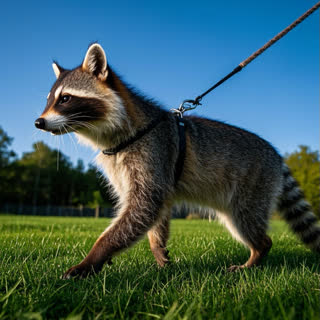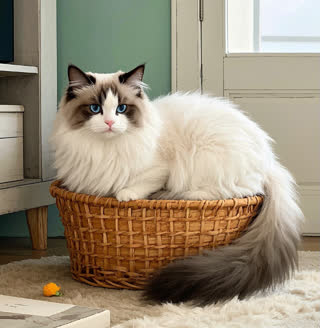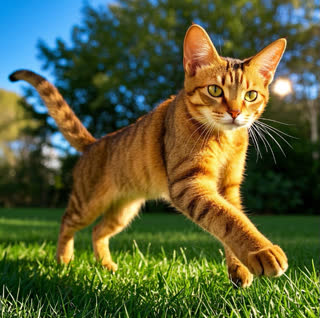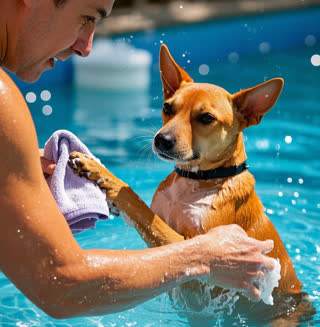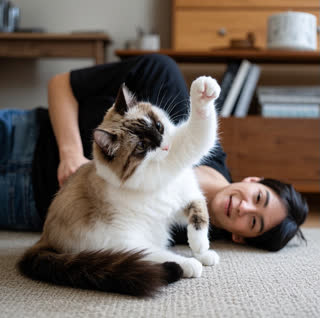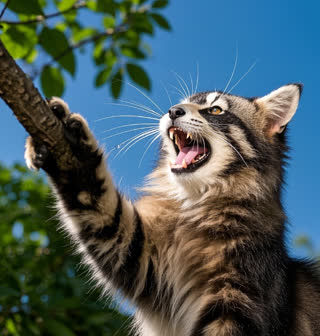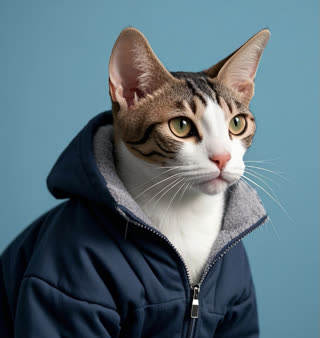Why Non-Shedding Cat Breeds Matter
1. Sphynx: The 无毛猫 (Hairless Wonder)
Shedding Level: None (genetically hairless)
Unique Traits:
Require weekly bathing to remove excess oils
Need heated blankets to stay warm
Social and dog-like in behavior
2. Devon Rex: The Elf Cat
Shedding Level: Low (short, curly coat)
Unique Traits:
Hypoallergenic due to sparse hair
Loves to perch on shoulders
Known for "pixie-like" facial features
3. Cornish Rex: The Wavy-Coated Beauty
Shedding Level: Low (soft, curly hair)
Unique Traits:
Produces less Fel d 1 than other breeds
Enjoys water and learning tricks
Requires monthly brushing to prevent matting
4. Balinese: The Long-Haired Hypoallergenic
Shedding Level: Low (long, silky hair with minimal undercoat)
Unique Traits:
Talkative and social like Siamese cats
Hypoallergenic due to reduced dander production
Requires weekly brushing to prevent tangles
5. Russian Blue: The Elegant Hypoallergenic
Shedding Level: Moderate (short, dense coat with minimal dander)
Unique Traits:
Produces less Fel d 1 than most breeds
Quiet and affectionate with family members
Known for "dog-like" loyalty
6. Bengal: The Wild-Looking Hypoallergenic
Shedding Level: Low (short, spotted coat)
Unique Traits:
Hypoallergenic due to short hair and reduced dander
Loves water and high-energy play
Requires daily mental stimulation
7. Oriental Shorthair: The Sleek Hypoallergenic
Shedding Level: Low (short, fine coat)
Unique Traits:
Similar to Siamese but with more coat colors
Talkative and demanding of attention
Hypoallergenic due to low dander production
8. LaPerm: The Curly Hypoallergenic
Shedding Level: Low (soft, curly hair)
Unique Traits:
Hypoallergenic because curls trap dander close to the skin
Adaptable to apartments or large homes
Requires minimal grooming
9. British Shorthair: The Plush Hypoallergenic
Shedding Level: Moderate (dense, plush coat with minimal dander)
Unique Traits:
Produces less Fel d 1 than other shorthairs
Calm and easygoing temperament
Requires weekly brushing to prevent matting
10. Burmese: The Low-Shedding Lap Cat
Shedding Level: Low (short, glossy coat)
Unique Traits:
Hypoallergenic due to low dander production
Loves human interaction and lap time
Requires minimal grooming
Choosing the Right Non-Shedding Breed
Activity Level: High-energy breeds like Bengals need more playtime
Grooming Needs: Even low-shedding cats require regular maintenance
Allergy Severity: Test with breeders before full commitment
Myth vs. Reality: Debunking Hypoallergenic Claims
Myth: "All hairless cats are hypoallergenic."
Reality: Sphynx cats still produce Fel d 1 in saliva.
Myth: "Bathing reduces allergies."
Reality: Weekly baths can reduce dander by 50%, according to ACAAI.
How to Care for Non-Shedding Breeds
Grooming Routine:
Sphynx: Weekly wipe-downs with damp cloth
Devon Rex: Monthly brushing with a soft brush
Diet: Feed high-protein food to maintain healthy skin
Environment: Use HEPA air purifiers to reduce allergens
Case Study: How a Russian Blue Changed One Family’s Life
Challenge: Severe cat allergies in a household of 4
Solution: Adopted a Russian Blue and implemented allergen-reducing measures
Result: 90% reduction in symptoms within 3 months
FAQs on Non-Shedding Cat Breeds
A: No, but some breeds produce significantly less Fel d 1.
A: Yes—prices range from $1,500-$5,000 depending on breed and breeder.
A: Yes! Many shelter cats have low-shedding traits.
Choosing a non-shedding cat breed opens the door to feline companionship for allergy sufferers. By understanding each breed’s unique needs and implementing proper care, you can enjoy a lifelong bond with your hypoallergenic cat. Remember—allergy-friendly living is possible with the right cat breed and proactive management.

